In 2016, I became absolutely OBSESSED with the idea of acrylic painting.
I had this dream of myself in a big studio, hands covered in paint, jamming out to my favorite tunes and dragging color around a canvas.
When I woke up, I pretty much high-tailed it to the nearest art store to bring my dream to life.
The only problem? I was completely LOST on where to begin with acrylic painting.
I had no idea what supplies to buy (or what to do with them), so I just grabbed a mixture of craft paint, professional-grade acrylic paint, a boatload of canvases and headed home.

I started my acrylic paint experiments by trying to paint images of objects I found online. I did my best to study the light and shadows and keep in mind perspective and proportion.
It didn’t take me long to figure out that trying to paint something by SEEING was a lot less satisfying to me than trying to paint something by FEELING.
I felt so restricted by the process, and trying to paint with any semblance of realism was robbing me of the joy I experienced in my painting vision.
That’s when I started to explore the idea of going abstract with acrylic painting.
I was much more interested in things like lines and patterns and shapes than I was any particular subject. Still, I found myself intimidated staring at my blank canvas with literally infinite possibilities of color, pattern, shape, and composition.
For a while I just sort of sat, paralyzed, afraid to paint anything at all. I was afraid of creating something “ugly,” focusing WAY too much on the outcome rather than the process.
That is until I figured the only way to get over my fear of not knowing where to start was to just start anyway.
The only way to get over my fear of not knowing where to start was to start anyway.
So I set up a small “studio” (read: table covered in a drop cloth) in our guest room and I began painting every day. I started small by experimenting in a mixed media sketchbook and trying out different brushstrokes, color combinations, and styles.
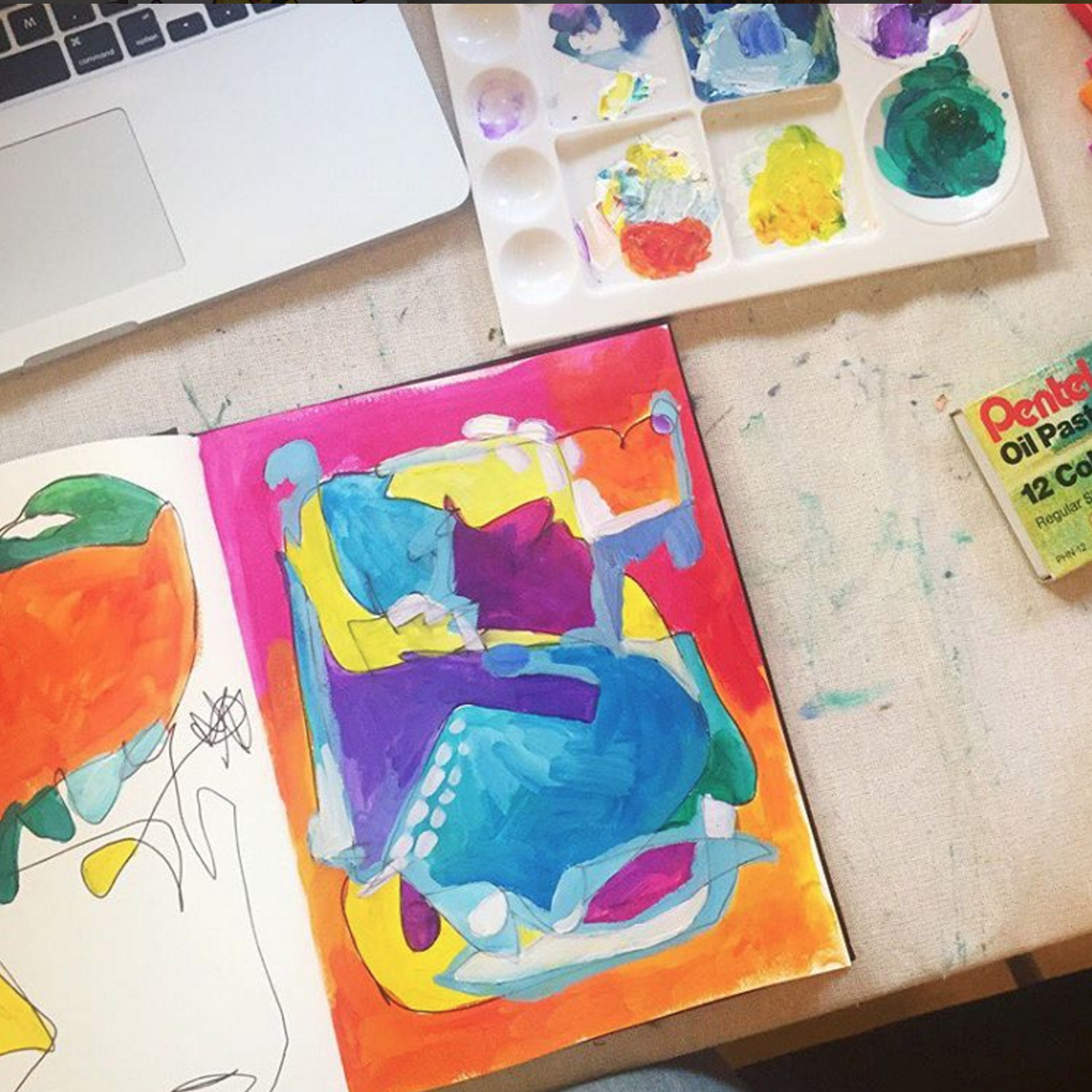


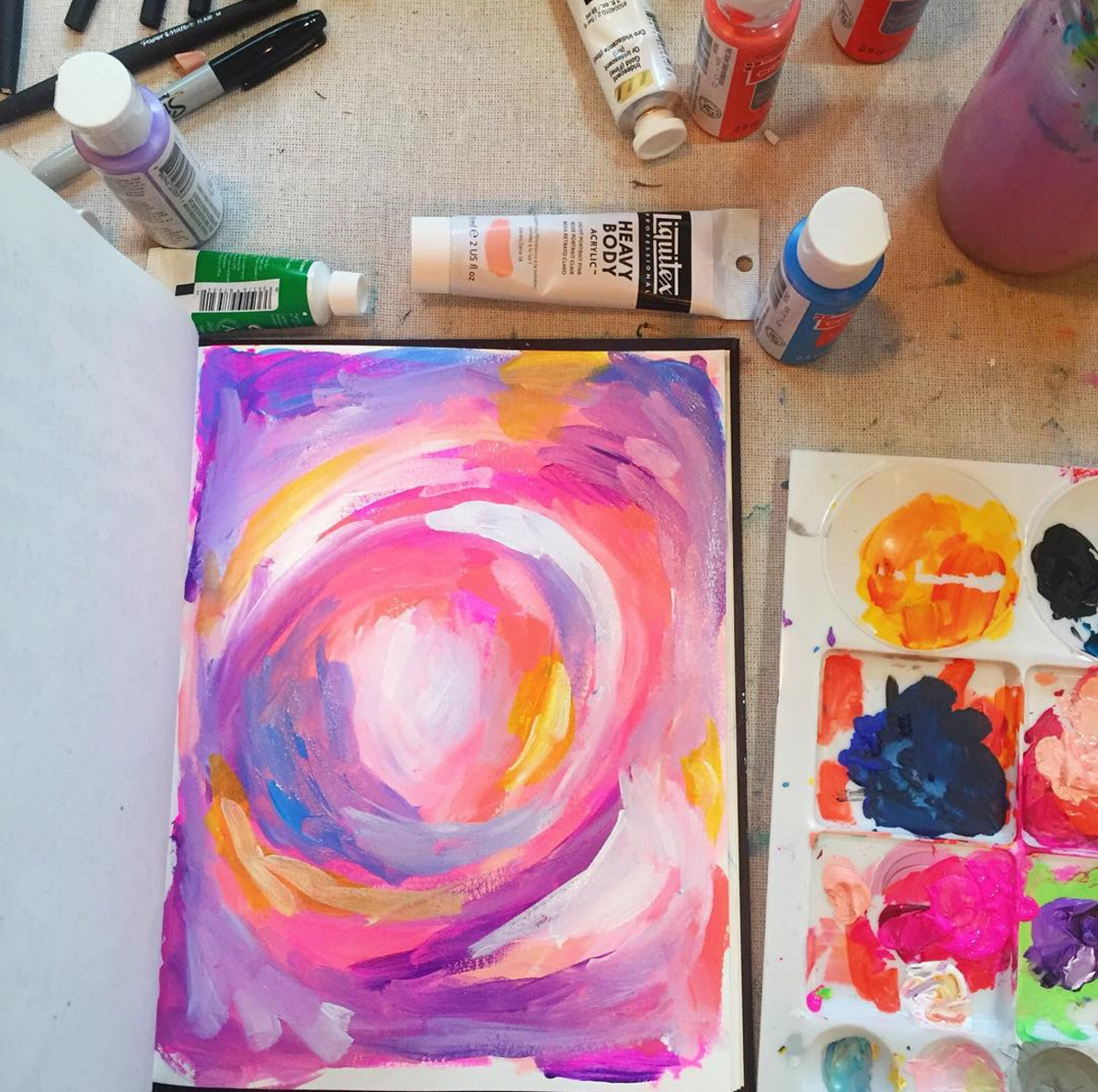

After I became more comfortable with the simple act of actually putting paint to paper (not just thinking about painting), I realized I still wanted to find MY unique voice.
So, in January of 2016, I decided to take my passion for acrylic painting one step further and commit to creating a different piece of art EVERY DAY of 2016.
My goal was simply to see how my own style would evolve and to try and uncover my unique voice through intentional daily practice.
(To give you an idea of that evolution, here’s a snapshot of the various styles I experimented with from January 2016 through September 2016!)






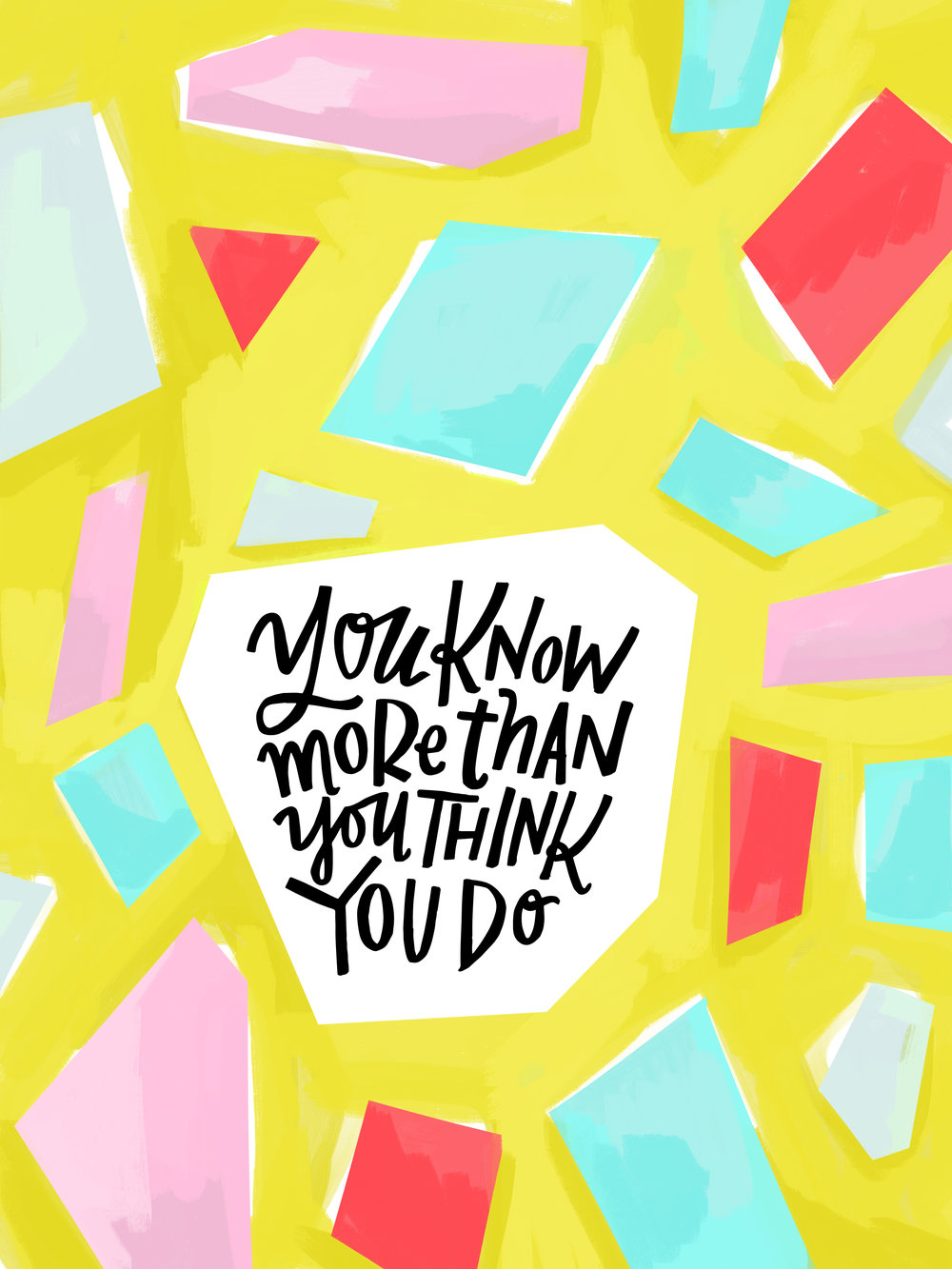
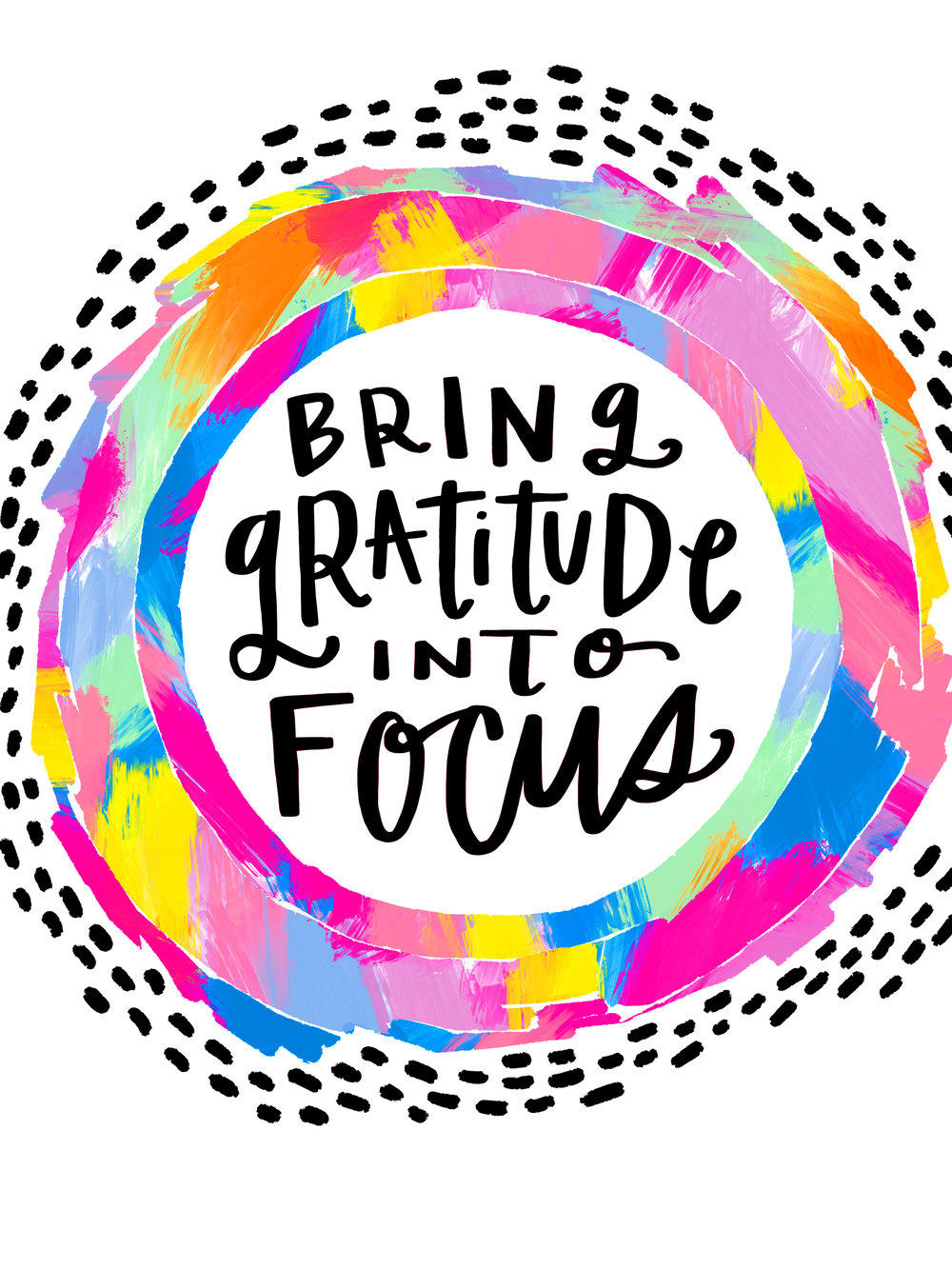
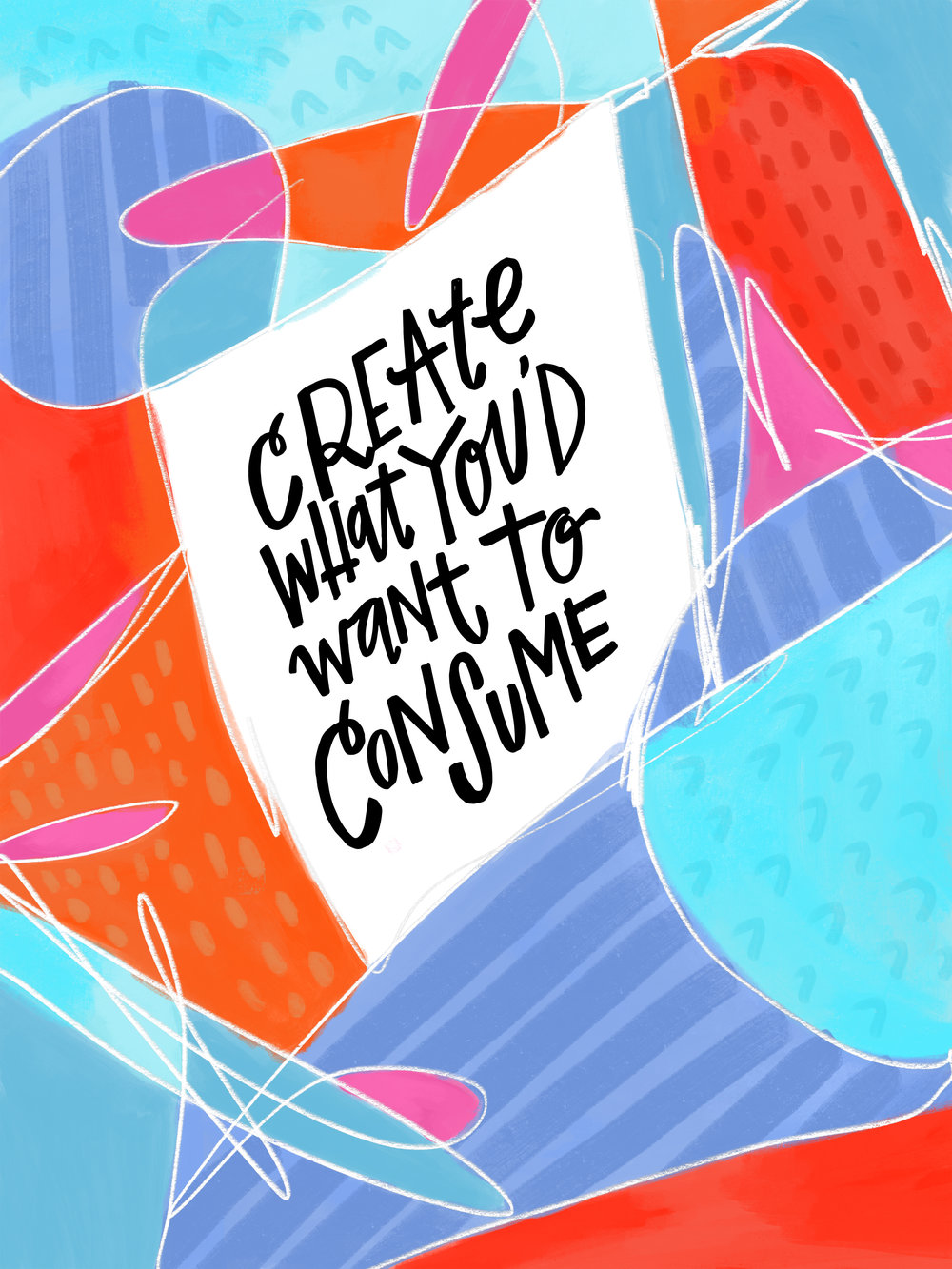

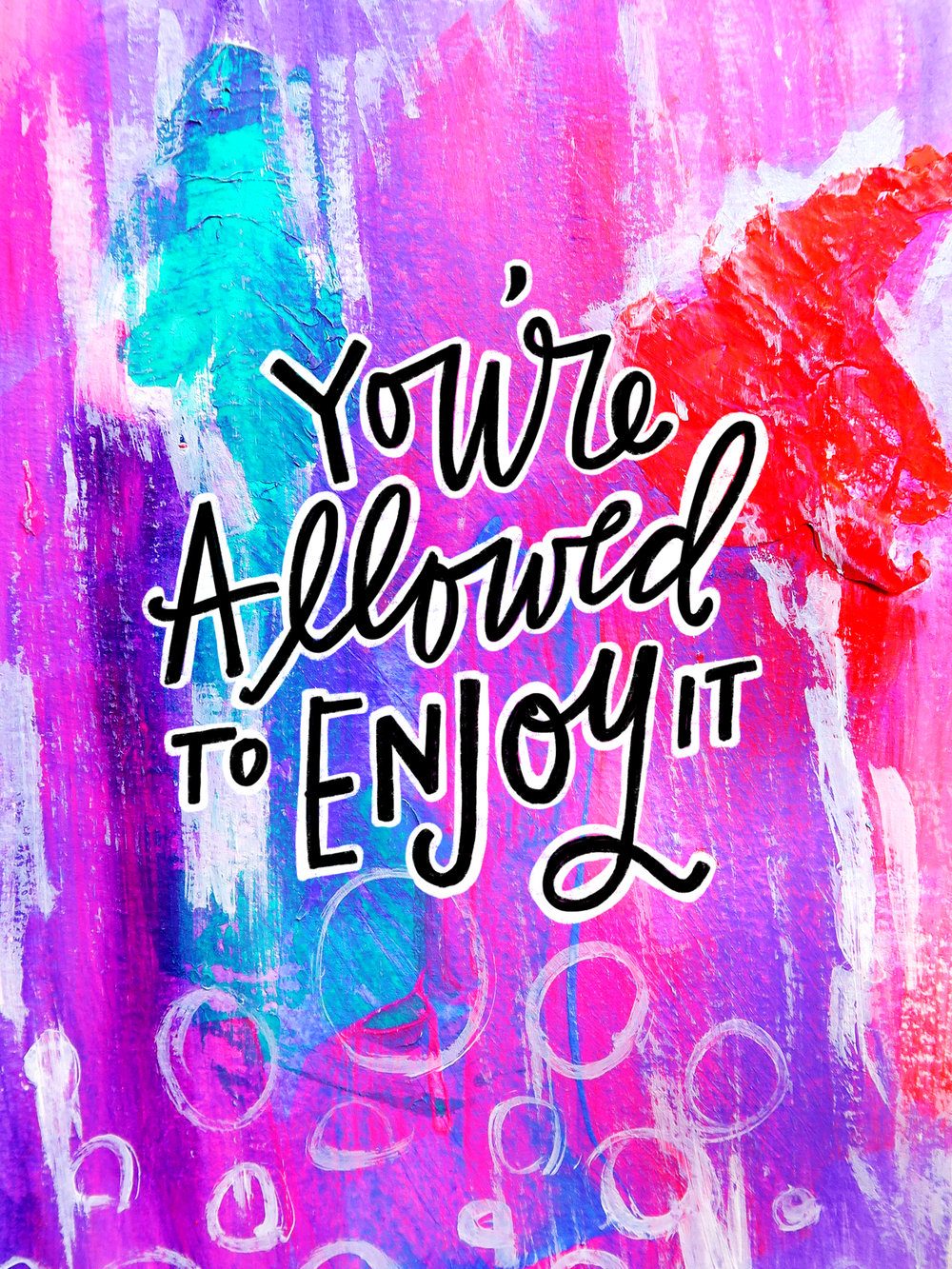
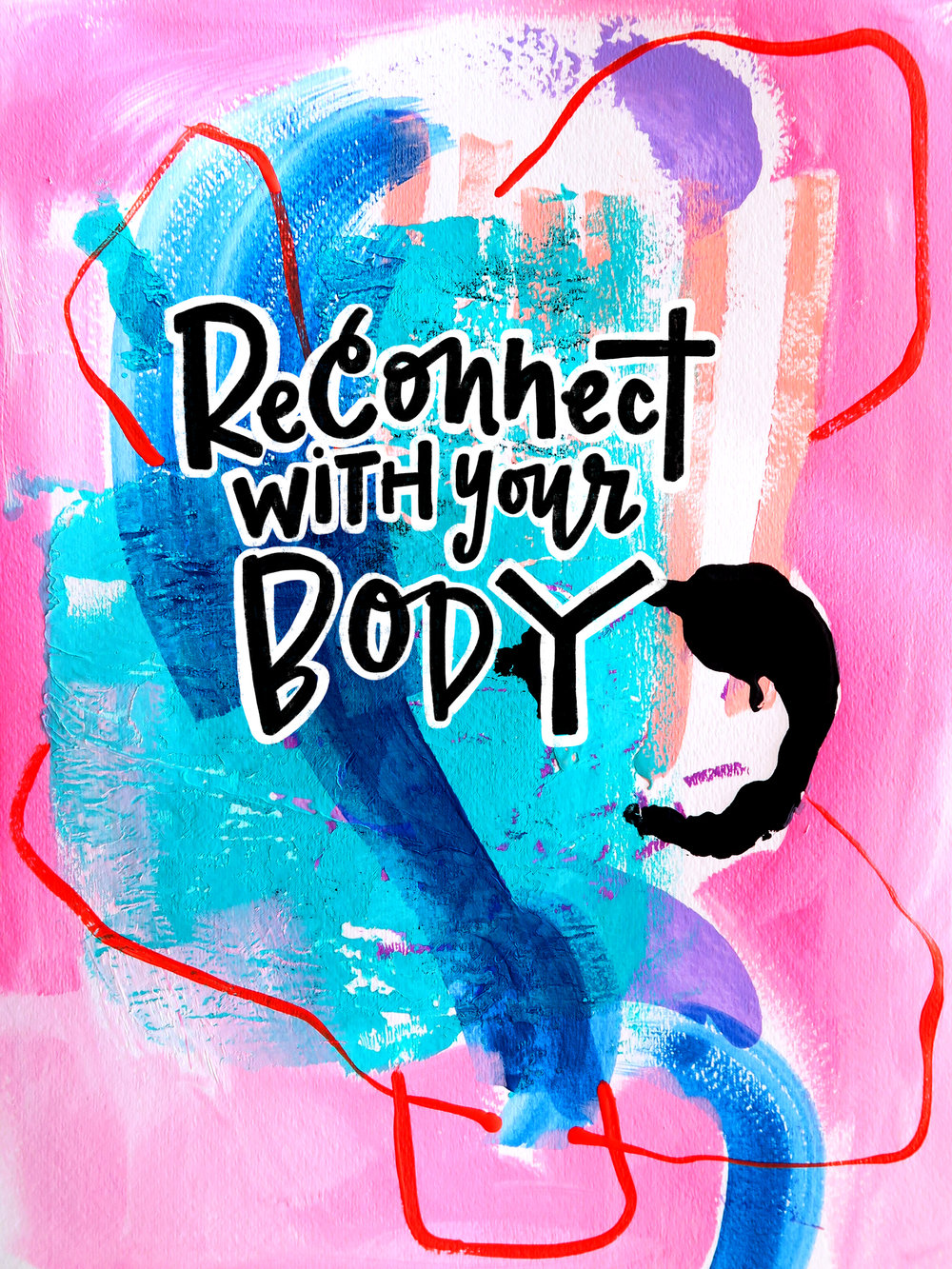
Looking for a beginner’s Acrylic Painting class?
I’ve put together a beginner’s course to share my love of acrylic abstract painting! In the class I share my favorite supplies for painting with acrylics, as well as three different techniques you can use to create your own one-of-a-kind abstract art! Watch the Getting Started lesson below…
Acrylic painting been the most rewarding process, and I’m more convinced than ever that acrylic paint is an amazing medium to express your creativity.
In the rest of this article, I want to take what I’ve learned in my acrylic painting journey thus far and share some tips with you in case you too are itching to express your creativity through painting!
4 Tips For Getting Started With Acrylic Abstract Painting
1. Acrylic painting starts with the right paper
That first trip to the art store, wandering the aisles of Michael’s, I literally purchased about 20 small canvases to begin painting (thank goodness they were having a 50% off sale!)
In my head, at the time I thought “It’s not a painting if it’s not on canvas.” How wrong I was! You can paint on ANYTHING, but when you’re starting out, the most important thing is to choose something that is cost-effective AND not intimidating.
When you’re starting out, the most important thing is to choose something that is cost-effective AND not intimidating.
Canvases are unfortunately neither of those things.
I don’t know about you, but when I look at a canvas, it feels so permanent and so formal. That fear of “messing up” creates one more barrier between you and painting and that’s what you’re trying to avoid! Not to mention they’re not cheap.
My solution? Trade-in canvas for thick, sturdy watercolor paper when you’re starting out.
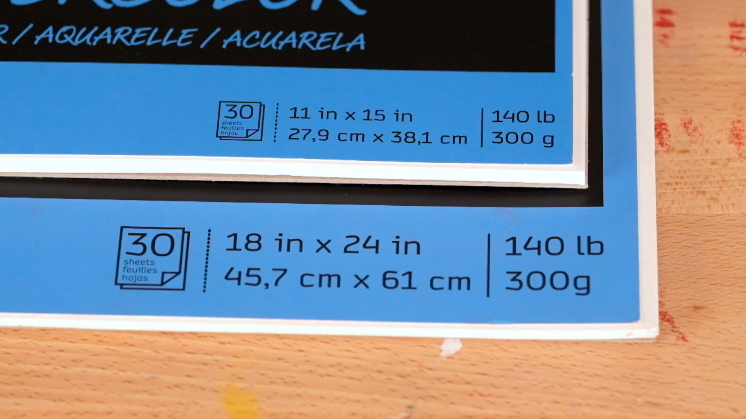
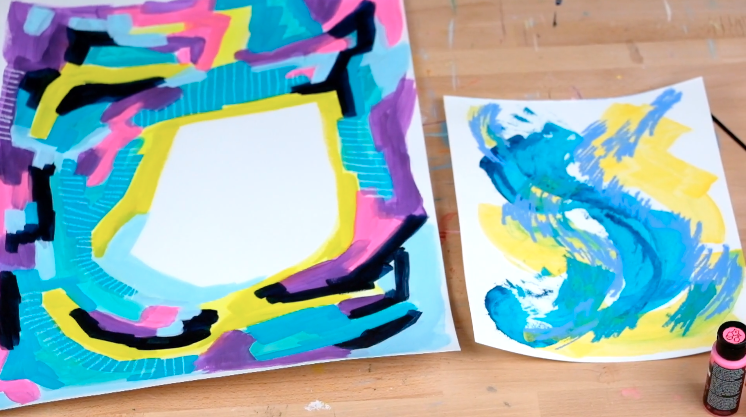
Once I made the move from canvas to paper, suddenly I was a lot more comfortable trying things and going through more painting experiments because I wasn’t as concerned with “messing up” a canvas. (Side note: there is no messing up in acrylics; you can always paint over it!)
Paper feels more playful, disposable, and approachable, plus it’s more cost-effective. Depending on the size, I’m able to get a pad of 30 9”x12” pieces of paper for just $10, as opposed to $16 each for a canvas.
**IMPORTANT: If you do decide to pick up the paper, aim for at least “140 lb” paper. That number is a reference to the weight of the paper. The higher the number, the thicker or sturdier your paper will be. I’ve found that anything less (like 90 lb) just can’t hold up to the weight and wetness of your paint and it will bubble. **
Paper Brands
Want an idea of something to start with? Here are some paper brands I’ve used and love!
When I started my daily painting project, I started by using these large 18″x24″ sheets of Canson Montval watercolor paper* which has a beautiful rich texture.

Since then I’ve switched to the Canson XL watercolor paper brand* which is still great quality, but it’s just a little bit less textured and happens to be more accessible as it’s available at Michael’s and my local art store. I’ve also gone down in size a few times (simply because I’m able to complete a painting more quickly) to the 11”x15”* and the 9”x12”*.
(FYI: links with * are Amazon Affiliate links and I get a small commission if you buy awesome art supplies through them at the same great price you normally get!)
Speaking of supplies, the next BIG tip when getting started with acrylics is to…
2. Experiment with a range of acrylic painting supplies
Like I said, when I started getting into painting, knowing which supplies to invest in was probably the most confusing part. I parked myself in a Michael’s aisle for about a half-hour wondering what paintbrushes I should get and what the heck the difference was between the paint in the “professional” section vs the “craft” section.
So let’s try to give you a little more direction, shall we? Here’s the biggest thing for you to know about acrylic painting supplies.
First and foremost, a HUGE disclaimer:
Everyone’s preference for acrylic painting materials is different.
Every paint has a different consistency, every brush has a different give and every paper creates a different texture. On top of that, every ARTIST (pst. That’s you!) has a different vision and spirit they’re bringing to their painting.
That’s why it’s so important for you to test a wide VARIETY of supplies so that you can see how each supply impacts your painting and the overall aesthetic of what you’re creating.
All that said, here are some basic things I’ve learned about the most important supply — paint — that may guide you.
Tips for buying paints
First off, yes, you can totally mix “professional” grade acrylic paints with regular ol’ craft paint, but there IS a difference in the quality and consistency from the cheap stuff to the expensive stuff.
There are basically three categories that acrylic paints falls in: (1) amateur or craft paint; (2) academic or student level; or (3) professional or artist’s level paints.
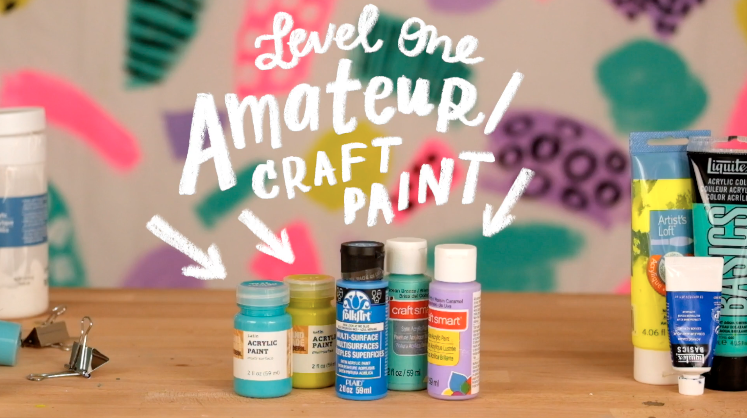
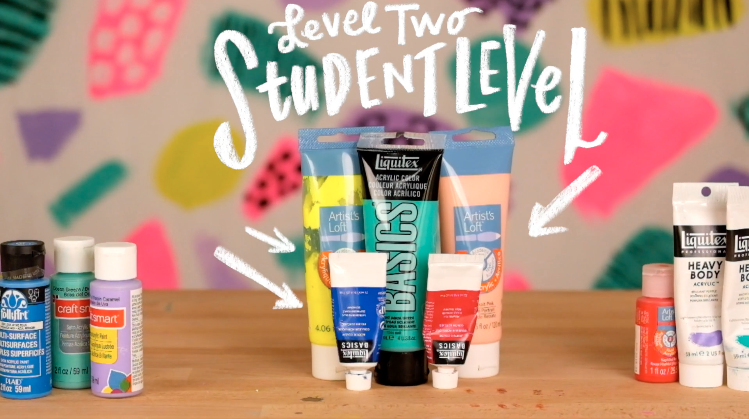
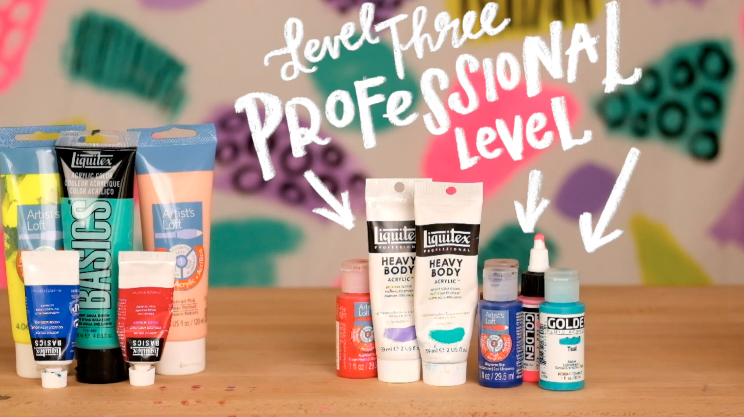
The main differences are in the quality of the pigment and the thickness/opacity of the paint. The higher you move up the quality spectrum, of course, the more expensive your paint will be.
So, what’s worth investing in? Well, I’ll tell you what I keep in my studio. The majority of paint I own is the first level — basic amateur craft paint — and that’s because I paint A LOT and I’m not too concerned with the long-term adherence of my paint to my paper or canvas.
I love craft paint because it’s cost-effective and comes in a wide variety of hues. I can also use it as a base to mix in my more expensive, higher quality paints, which makes them last longer in my studio.
One student-level paint that’s great to start out with is the Liquitex BASICS paint*. When I was beginning, I invested in a variety pack of the small tubes and that got me acquainted with the thicker, richer paints. Now I buy the occasional bigger tubes because I know what colors to go for, but if you’re looking for a middle of the road option to get started, it’s a good one.
Finally, my two favorite paints I’ve experimented with are the Liquitex Heavy Body Acrylics* and Golden Fluid Acrylics* for two different reasons.
Texture of the Heavy Body Acrylics in action:
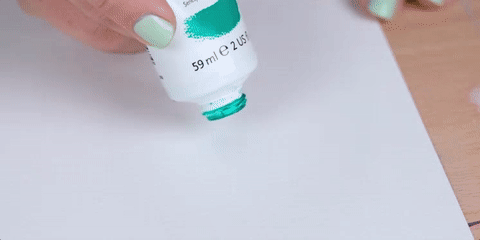
The Heavy Body Acrylics are rich and buttery and SUPER thick.
I love using them when I want a very strong, opaque color, and as I mentioned, I use them to mix with my craft paints to give them more weight and hold.
Texture of Golden Fluid Acrylics in action:
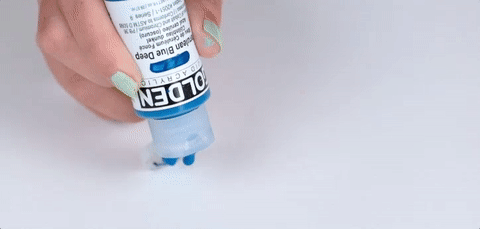
Fluid Acrylics, on the other hand, are very thin, almost runny, but the pigment is rich and velvety and strong.
This type of paint can create completely different marks than paint of a thicker viscosity and I love experimenting with it, especially to get that “drip” effect that you see in the pieces below:
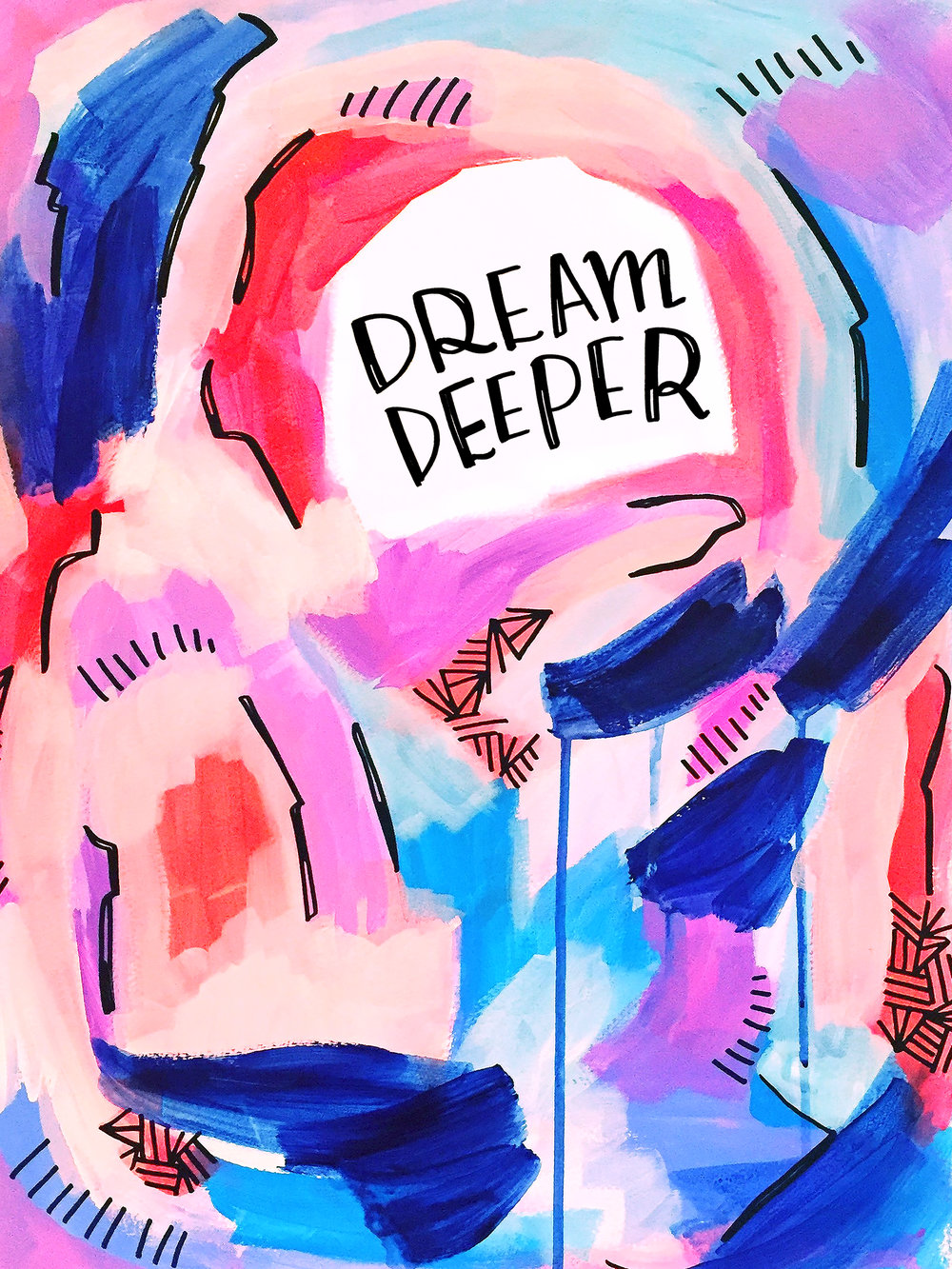

Again, the only way to know what YOU like is to try out a variety of supplies. I recommend setting an introductory budget for yourself and getting a diverse range of quality levels and brands to find out what you love best.
Enjoying this article on acrylic painting?
I’ve put together a beginner’s course to share my love of acrylic abstract painting! I’ll walk you through my favorite supplies for painting with acrylics, as well as three different techniques you can use to create your own one-of-a-kind abstract art!
Also, consider experimenting with unconventional materials too!
A few months back Jason and I were baking and I wondered if I could use wax paper to create texture on my paintings. I’ve been experimenting with wax paper in my work ever since and I’ve discovered at least 10 different ways to use it in my paintings to add texture and spontaneity.


Okay, once you have a wide variety of supplies in mind, you might be wondering… what color paints should I buy? Which leads me to my next tip…
3. Explore different acrylic painting color palettes!
I’m obviously a sucker for bright, VIBRANT colors. (What? You couldn’t tell? ?)

I’ve always gravitated to the energy and inspiration I get from colors that are very saturated, so I tend to scoop up just about every bright or slightly bright color I can find, and I steer pretty clear of earth tones and more dull or shaded tones.
As for you, ask yourself what colors you most gravitate toward not just in art but in life.
Do you feel connected to the tranquility and softness of pale pastels? What about the grounded boldness of dark and moody earth tones?
Look to your wardrobe and interior design style for clues.
What things do you find yourself loving when you’re in the home decor aisles of Target? Vibrant, bold throw pillows or earthy, rich accents?
Color ultimately reflects and communicates emotion.
Choosing what color palettes to paint with is your opportunity to do what resonates with YOU, and the beauty of abstract painting is that you don’t have to worry about your palette matching a certain subject or landscape.
Using Pinterest as a color exploration tool
One fantastic tool for uncovering your color affections is Pinterest! Start a board of color inspiration and see what you start to pin. Then search your visual inspiration for color palettes that you may not have thought of on your own.

The thing about color is that there are literally INFINITE possibilities, and while I love to go with my instincts when selecting colors, sometimes I like to switch it up and pluck my palettes right out of inspiration I find.
For a while, I would actually build color palette mood boards, tape them up in my studio and then use them as inspiration in my abstract paintings. It was so much fun! I could interpret the color scheme in my own way. You can see examples of that here:

Sometimes I’ll also draw out color inspiration from one single photo. And the best part — you don’t need Photoshop to put these together! You can use a free and simple tool like a Google Doc/Google Slides presentation (like I do below) or a Keynote/Powerpoint presentation. (Pro tip: To get the colors from the photo, I use this Chrome extension, Eye Dropper.)
I just pull up this inspo doc up on my iPad while I’m in my studio if I want color palette inspiration!
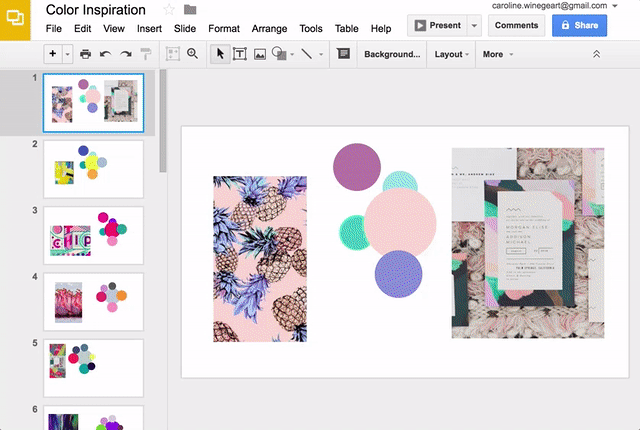
Again, remember that color palettes, just like materials, will require experimentation and exploration. Your color preferences may change over time and that’s perfectly fine.
Still, starting with a general idea of what colors you want to buy/work with might help you overcome that overwhelming feeling that I had when I started out.
4. Dive in and practice acrylic painting!
The ultimate tip to getting started with painting is simply, well, BEGIN! Forget whatever stories you’re telling yourself about what supplies you NEED (turns out, you actually do not need an easel to be an artist ?) or what you are or aren’t good at and just dive in.
The truth is, you can read articles (like this one) or do ALL the Google searches in the world to see how the “experts” do it, but ultimately you’ll never uncover your unique artistic voice unless you devote time to making things and putting in the practice.
You’ll never uncover your unique artistic voice unless you devote TIME to making things and putting in the practice.
Painting is such a beautifully therapeutic exercise and I really do believe that it has the power to heal and TEACH us things about ourselves that other things just can’t. It’s a way to express your feelings and instincts in a tangible, visible way.
So throw whatever judgments you have out the window, go to your nearest art store, grab a few things and simply START PAINTING. I know you’ll be glad you did!
Want More Help Getting Started With Acrylic Abstract Painting?
Painting has been the most amazing gift in my life and it’s helped me see myself more fully as an “artist” — something I was always afraid to call myself before.
If you need a tiny boost to get started, sign up for Acrylic Explorations and I’ll walk you through my own painting process MUCH more in-depth. I take you through the materials in my studio and share with you three different acrylic processes from start to finish.
For just $35, you get:
- 14 short class videos (70 minutes total of instruction) including teaching of concepts AND demonstration painting
- Access to the private class dashboard, available on desktop, tablet or mobile devices
- Bonus “Buying Guide PDF” for my supplies recommendations in a variety of budget ranges
Get the lessons you need to start your acrylic painting journey!
+ Lesson 1: Welcome / Your Creative Mindset
+ Lesson 2: Class Supplies / In-depth videos on paints, paper, brushes and more.
+ Lesson 3: Basic Abstract Art Properties / Basics of Color and Color Mixing
+ Lesson 4: Let’s Paint! / 3 Different Abstract Art Techniques from Start To Finish
+ Lesson 5: Your Class Project
Click the image below to get started or click 🎨 here.
Hope you enjoyed this post, and remember…









